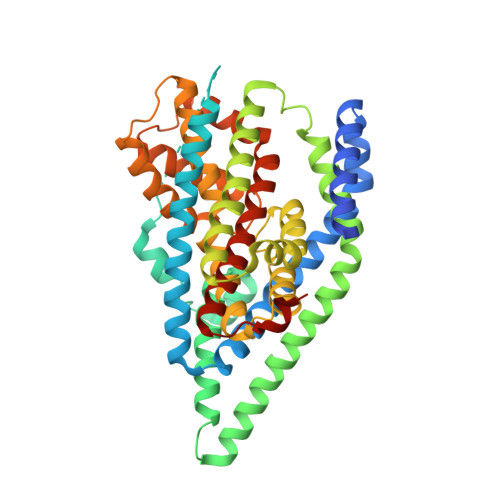Mutation in glutamate transporter homologue GltTk provides insights into pathologic mechanism of episodic ataxia 6.
Colucci, E., Anshari, Z.R., Patino-Ruiz, M.F., Nemchinova, M., Whittaker, J., Slotboom, D.J., Guskov, A.(2023) Nat Commun 14: 1799-1799
- PubMed: 37002226
- DOI: https://doi.org/10.1038/s41467-023-37503-y
- Primary Citation of Related Structures:
8AFA - PubMed Abstract:
Episodic ataxias (EAs) are rare neurological conditions affecting the nervous system and typically leading to motor impairment. EA6 is linked to the mutation of a highly conserved proline into an arginine in the glutamate transporter EAAT1. In vitro studies showed that this mutation leads to a reduction in the substrates transport and an increase in the anion conductance. It was hypothesised that the structural basis of these opposed functional effects might be the straightening of transmembrane helix 5, which is kinked in the wild-type protein. In this study, we present the functional and structural implications of the mutation P208R in the archaeal homologue of glutamate transporters Glt Tk . We show that also in Glt Tk the P208R mutation leads to reduced aspartate transport activity and increased anion conductance, however a cryo-EM structure reveals that the kink is preserved. The arginine side chain of the mutant points towards the lipidic environment, where it may engage in interactions with the phospholipids, thereby potentially interfering with the transport cycle and contributing to stabilisation of an anion conducting state.
Organizational Affiliation:
Groningen Institute for Biomolecular Sciences and Biotechnology, University of Groningen, 9747AG, Groningen, the Netherlands.















